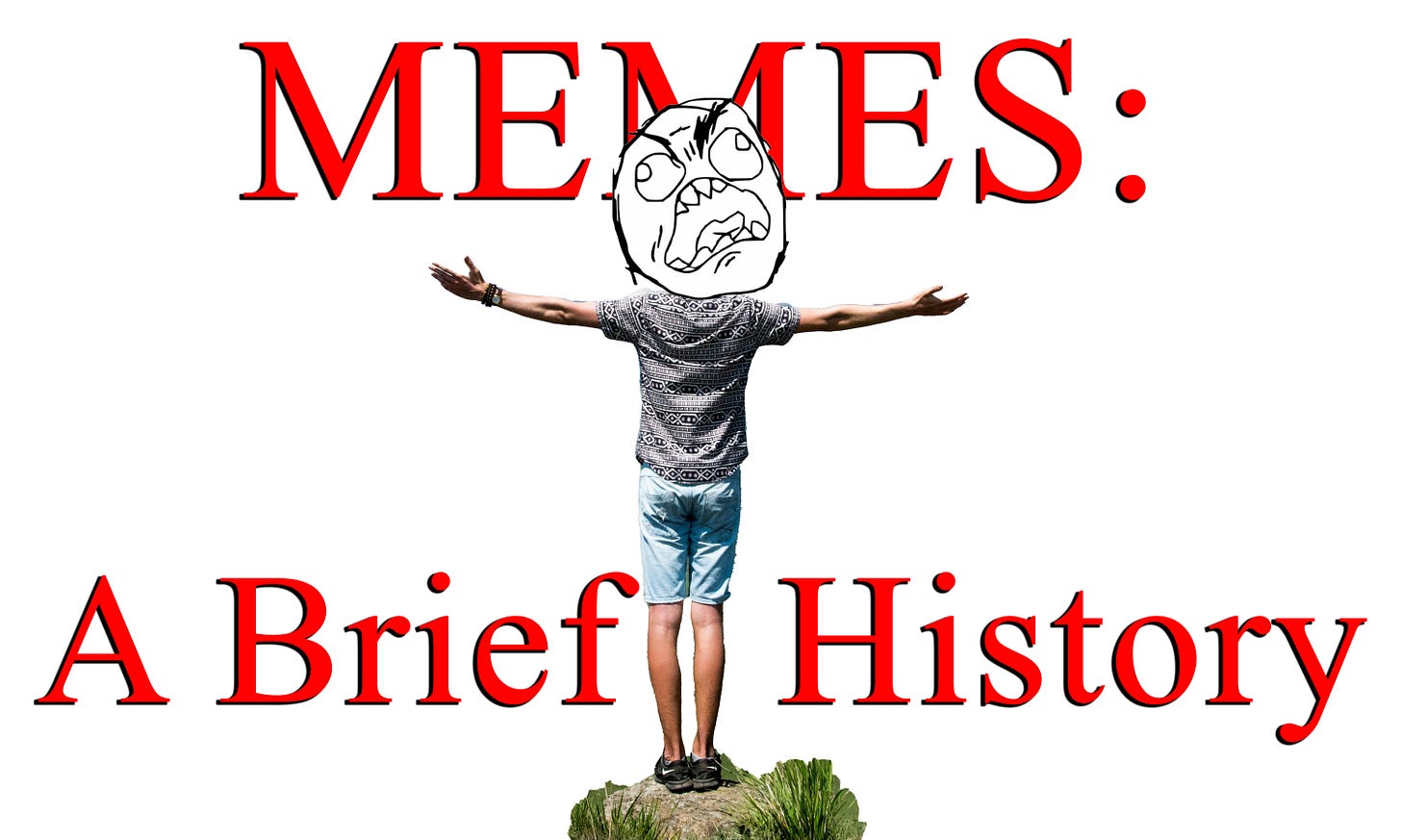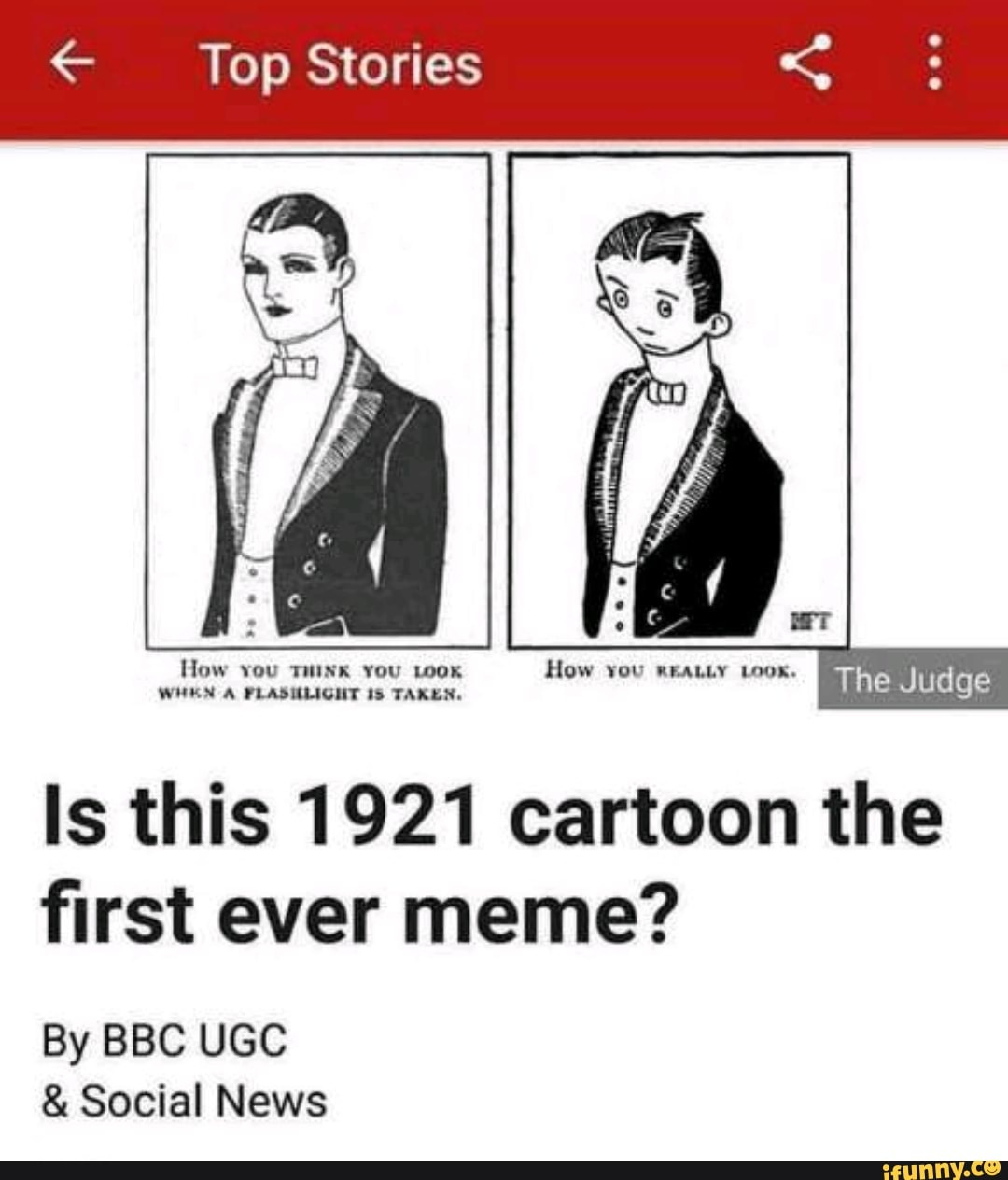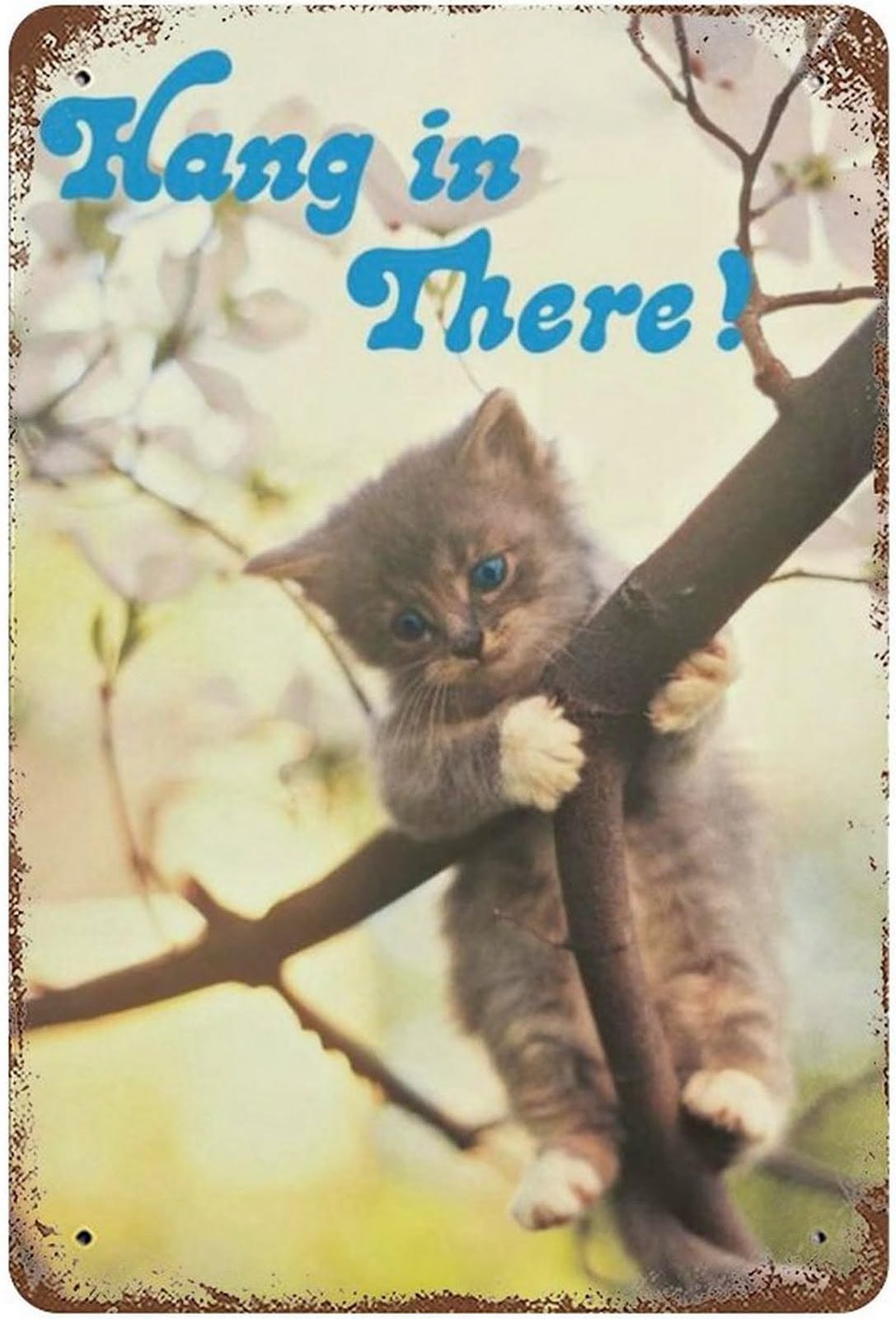“Out of signs and symbols we weave the tissue of our reality”
Sussane K. Langer
There is an idea that we did not domesticate wheat, but that wheat domesticated us to create more of itself, and in this way we are in a symbiotic relationship with our food’s genetic impulses.
10,000 B.M. (Before Meme)
What is the first meme?
That’s an impossible question. The word meme was defined by Dick Dorkins (Richard Dawkins) as a unit of cultural transmission. Think of a meme as a packet of information that replicates itself through thought spaces, like brains. This is the technical definition, laid out in the last chapter of Dorkins’s book ‘The Selfish Gene’. Now this branches out from information theory, which is the study of how information moves, and can get pretty weird, as we drop into bizarre schizoid ideas like Spinal Catastrophism, where geography contains a communicative dimension as a “deposit of memory” that shape how humans think and even how our bodies take form. . . which is pretty deep down the well. As you likely already gathered from the technical definition, we run into a pretty significant problem, specifically, identifying the first meme would likely require a time machine. Though, we can infer a few of the earliest memes, namely cultural norms, ancient art, and ancient religions are all artifacts of the first memes.
Now there’s a Evolutionary Psychology perspective that might allow us to rebuild aspects of the past with say Paganism as it exists in its current incarnation, however the issue here is the issue with the study of Evolutionary Psychology and even Evolutionary Biology in the first place: Useful as it is, to be done right, the evolutionary psychologist must rid themselves of their current ideological context. Anthropologist David Graeber has noted for example that the theories of widespread barter as the basis for all capitalist thought is technically wrong, nevertheless this particular meme has strong cultural staying power. Now it’s hard to shed the confines of ideology when it permeates everything. For that reason I won’t. The traces of the first meme still exist today in the oldest religions like Judaism, paganism, and the oldest art such as those remaining in the ancient caves of Spain and France, even our relationship with domesticated animals such as dogs and cats contain traces of the definition of memes.
These Ye Olde Memes contain encoded presentations of ways of being, or at least represented ways of being meant to be communicated from one group to another.This is the baseline. Beyond here many things become memes, in fact most things impacted by culture or ideology will be memes. and while a lot of it is pretty cool, just as much sucks, because in a sense, as with genes according to Dick Dorkins, our minds, our culture are survival machines for these memes, not the other way around.
But there is another definition of Meme.
1 A.M. (After Meme)
The Meriam-Webster dictionary defines a meme as an amusing or interesting item (such as a captioned picture or video) or genre of items that is spread widely online especially through social media.
Somewhat recently, “Hang In There” cat, “Goodbye Cruel World” Cat, “Where is my Dinner” Cat (1905) were all retroactively declared to be some of the earliest memes, fitting the LOLCat format of the early 2000s. The BBC also announced that the below cartoon from 1921 could well be considered an meme, fitting the Expectations vs Reality format. Very relatable. Very Me When I. . . And these images do all seem to feel familiar, in the evolutionary psychologist way, experts have retroactively defined these as memes from their similarity to the current incarnation of memes, having thus cautiously defined them as protomemes. These protomemes would be circulated through newspapers, through the market, through small communities. And it was all bliss and joy.
But even before those, something interesting was going on. First came the printing press. Then came the typewriter and the invention of the emoticon, arguably amusing and interesting items. Then came the electronic typewriter. . .
476 A.M. (After Meme)
And in 1983, Al Gore (Vinton Cerf and Bob Kahn) Invented the internet. According to the encyclopedia Britannica, on september 1982 was the first substantiated use of emoticons on an internet message board. Happy and sad faces, specifically.
And from the emoticon, came some real creativity.
From the skies above terror reigned down upon the masses, at least those who opened email chains or spent time stalking forums. The ROTFLCopter made its debut in World of Warcraft and spread along the forums of the early internet such as Something Awful. And people were starting to really get creative with emoticons.
Meanwhile, other technologies were developing, namely, computer generated images. By 1990 a home console game called Zero Wing was created with the infamous mistranslation of “Now all your bases are belong to us”. But this one was still raw, still needed time to cook. Not yet a meme, All your Bases are Belong to Us would need time before becoming a proper meme. But in the meantime, it behaved like a Dorkins Meme, it was a small piece of subculture that gamers could cackle about in chat rooms or in real life.
In the early 1990s Michael Girard and Susan Amkraut started the Unreal Pictures Inc and began generating 3D models and moving them hither and thither as samples. One such sample was a human skeleton that they manipulated in various ways. They hired Robert Luyre to continue making samples, and ultimately added some dance moves. Then came the real meme-quality. He mapped a baby design over the skeleton. They exhibited the dancing baby at a design conference and ultimately opted to scrap it due to its uncanny nature. But the world was not done with this little freak.
In the meantime, email chains were growing in popularity. Email chains, being one of the earliest pathways for virility. In particular a specific video began circulating: The dancing baby video.
The internet’s sense of humor was developing. And by the early 2000s “all your base are belong to us” emerged, gif-ified on forums as a fully fledged meme. And beyond forums, beyond email chains, new pathways were forming for the spawning and replication of memes. . .
1776 A.M. (After Meme)
When millennials and Gen Xers discuss memes, a specific set of images come to mind, the true basis of the most popular and contemporary meme format: The image Macro. According to the website, Know Your Meme, the term “image macro” was invented on the website Something Awful, for images used as responses on the forums. Here, memes were created, evolving out of emoticons and emojis into fully actualized images, usually with text, but often indicating a mood or a retort. Generally lousy drawings, created in MS Paint, or cut out from stock images these memes took the internet by storm.
By the late oughts of the 2000s, we entered the LOLCat era, arguably the most important phase of the internet meme. Here memes became both democratized and ubiquitous as the internet expanded into every household. Websites like ICanHasCheezBurger and MemeGenerator ruled the day. Meanwhile, forums were not losing steam, however their new counterpart: Social Media websites were taking off. Facebook and MySpace in particular created avenues for the perpetuation of memes found or created on the various imageboards around the internet.
And moreso we began to see stranger things on internet spaces. Drinking out of cups, for example became a viral video around the same time as FAIL compilations as Youtube emerged in 2009 from the ashes of adult cartoon festivals and America’s Funniest Home videos. The emergence of Charlie Bit Me, Salad Fingers, Happy Tree Friends, Double Rainbow, Charlie the Unicorn, all defined the era. The Trololo song became an anthem for a generation of internet basement dwellers hell bent on pranking all those on the internet who were not quite in on the joke.
What was the joke?
The internet, entirely. The internet had become the joke. The internet had become something of a meme, both in the scientific sense and the colloquial version.
A democratized internet veered towards the nihilism of unbridled joy, and from that comes the current state of memes.
2112 A.M. and beyond. . .
As photo manipulating technology became more and more accessible in the 2010s and as more and more people became technologically savvy, the meme developed further, becoming more niche, signs departing further and further from signifiers. Memes becoming self-referential works of absurdism, often times dark and disturbing (Markiplier E). Often times deep fried. Often times frightening with the growing popularity of creepypastas and mascot horror video games thanks to stories like Momo and slenderman or games like Five Nights at Freddys.
Then the Russian bots came. Real or not, like Jenkem, the boomers decided that Russian bots were memeing on the haters. In fact, there are many who still believe that Donald Trump would have never won the 2016 presidency without the Russian Bots. And while the truthiness of this speculation is up for debate, it is true that memes were at least partially responsible for informing the public. With news stations like Buzzfeed emerging, the popularity of the infographic spread, which was at once used against the promoters of infographics and listicles. Memes took on a political edge as they fused with infographics, and to this day continue to inform all sides of the political spectrum.
Thus, the meme wars were waged, leaving a trail of devastation in it’s path.
And Baudrillard rolled over in his grave.
And we are far past the deep fried phase of meme history, and there has been somewhat of a regression. While there are still traces of absurdism, many contemporary memes have regressed to screenshots from Twitter, leading some to suggest that the internet meme is a dead medium. Nevertheless, tame now, memes still exist and persist. A lot of what keeps meme culture alive is the sort of de-formating, or broad-detemplatification of memes. There are no really recognizable templates as in the days of the LOLcats and the troll faces. Feelsman still persists among a few others, such as the Chad, and certain formats like the screeching car continue their reign in the year of our lord 2025, it is clear that memes have become mostly freed from their chains of specific formatting. And without that specific formatting internet memes are becoming more and more like the Dorkins definition of a Meme. They are regressing away from specific guidelines and towards the chaotic return of information packets influencing culture.
Memes are 21st century iconography. Some have even suggested that memes are the new rock n’ roll, or punk rock, at its most political and nihilistic. However, it is more clear, that memes are simply efficient ways of communicating ideas, even if those ideas are nonsense. We, internet users, memers, trolls, whatever else, are as Dorkins implies, the vehicles for these ideas, trying desperately to find life in us. For this reason, memes are amoral (not immoral) in the same way that genes are. While we can suggest that someone with Huntington’s disease procreating may have done something immoral, we cannot say that the genes that cause Huntingtons are themselves immoral. They are simply trying to find ways to proliferate.
The meme does the same thing through us, through the pathways of the internet. And as the internet grows and changes and develops, so too will the ways in which memes guide us through our interactions in culture, online or otherwise.






